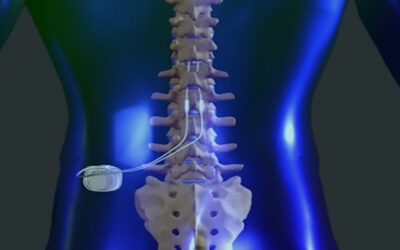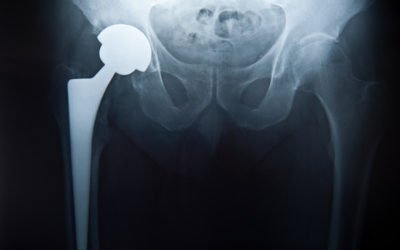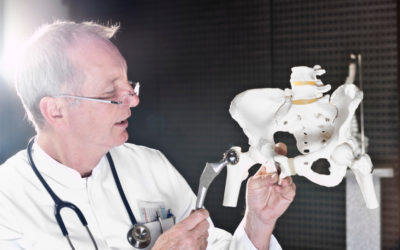Pain in or around the lumbar spine is a common problem suffered by most people at some point in their life. Most episodes will pass with time and a few simple measures. If these conservative measures fail after one to two months trial, or if the problems become severe, I would recommend evaluation by a back specialist.
If you develop bowel or bladder incontinence, weakness or numbness in your legs, these are signs of a more serious problem that may require a referral to a spine specialist right away.
I am a surgical specialist in hip and knee reconstructive surgery. I am not a specialist in the treatment of spine disorders. I do not offer long-term medical management for chronic pain. Because many people who suffer from hip disorders also have back complaints, I offer the following educational brochure. If you have any questions that apply to your specific case, please do not hesitate to ask me. If you wish to be evaluated by a spine specialist at any time, I will be happy to make the recommendation or referral.
If you choose a trial of conservative treatment, I would recommend the following:
I. Activity modification; avoidance of activities that aggravate the problem.
II. Medication: Usually a combination of anti-inflammatory medication, Tylenol and Glucosamine is helpful. Muscle relaxants and narcotics can be used for a short term, if symptoms are severe. Of course, medications that you are allergic to or cannot tolerate for other reasons should be avoided.
A. Anti-inflammatory medications: There are many choices, both prescription and over-the-counter. Only one from this category should be selected and taken on any one day. If any of these are taken long-term, you should advise your medical doctor and have routine blood tests done periodically.
1. Over-the-Counter:
-
- buprofen 200 mg (Advil, Nuprin, etc.) Maximum prescription strength would be 800 mg three times daily. This is best taken with food.
- Naproxen Sodium 220 mg (Aleve). Maximum prescription strength is 500 mg two times daily. This is best taken with food.
2. Prescription:
-
- Celebrex 200 mg, one to two times daily.
- Meloxicam 7.5 mg two times daily.
- Many others are available.
Stomach problems occur in up to 5% of people taking these medications long-term. You should inform your medical doctor and have routine monitoring of blood tests, if you take any of these medications long-term.
Stomach problems are less common with a Meloxicam and Celebrex. Prilosec 10 mg can be obtained over-the-counter and can protect somewhat against these stomach problems caused by these medications.
B. Tylenol: Most adults can take up to six tablets (650 mg each) daily. Those people with underlying liver problems or who consume more than two alcoholic beverages per day should take less and have their liver function monitored by their regular physician.
C. Glucosamine: 1500 mg daily. There are many brands and formulations. Some do not contain the advertised amount of Glucosamine. Whether to add Chondroitin or not is controversial. There is good scientific evidence that Glucosamine (not Chondroitin) relieves the symptoms of mild or moderate arthritis. There is no evidence that it rebuilds cartilage or prevents further cartilage deterioration. (Beware of false advertised claims: The FDA does not regulate supplements).
You need to take this supplement for at least two months to truly test its effect. If it does not relieve your symptoms after that time, there is no reason to take it any longer.
D. Muscle Relaxants: Medications such as Flexeril or Valium may be helpful to relieve muscle spasms. They often make people “groggy”. I would only occasionally advise these for short periods of time.
E. Tramadol (Ultram): A semi-narcotic drug with some addictive potential. This can be used short-term for treatment of back pain if other measures are not adequate.
F. Narcotics: Many different types are available. They all work in a similar fashion and they all have significant addiction potential, if taken long-term. They should only be used, if the other methods fail. I do not prescribe long-term narcotics. Common side effects include: mental changes, constipation, itching, and nausea.
III. Heat. Apply to the affected area; may help relieve symptoms.
IV. Back Exercises: Generally the most effective treatment for most people. Exactly why this works so well is not known. The most common reason for failure is lack of compliance (People just do not want to spend the time and effort). I would recommend you see a physical therapist and learn a proper program. You should then incorporate this program into your own exercise routine. Beware, heat packs, TENS (neuro stimulation), massage all feel good at the moment but are expensive add-on treatments that physical therapists sometimes utilize that do not have much long-term benefit.
V. Aerobics Exercise: A good aerobic exercise program three times a week for at least 30 minutes is an important part of the program. Options include such activities such as brisk walking, exercise bicycle, elliptical, or swimming. The key is to get your heart rate elevated through exercise.
VI. Weight Loss:
BMI = (Your weight in pounds) x 705 / (height in inches) x (height in inches)
BMI > 40 morbidly obese
BMI > 35 severely obese
BMI > 30 obese
BMI > 25 overweight
If you get down to a normal weight, your back and other lower extremity joints will feel better
VII. Diet: There are many fads out there. They mostly are quite expensive. People are easily fooled into believing they can “buy weight loss” through some fancy gimmick, that promises weight loss without much effort. They try to avoid the difficult discipline of adhering to a healthy diet and a program of moderate exercise. The formula is very simple: Calories eaten minus calories used = fat stored.
Calories consumed:
- Basic metabolic rate (BMR): some people are fortunate to have a high BMR. There is no evidence that this can be changed by some type of gimmick or pill.
- Growth (This only applies to children).
- Exercise.
Generally healthy diets involve:
- Limitations of calories.
- Avoidance of sugars and starches.
- Preference for complex unprocessed carbohydrates containing as much fiber as possible.
- Moderate balance of healthy fat (olive oil, canola oil, poly-unsaturated oils).
- Protein.
- I recommend Weight Watchers or South Beach diet as a starting point.
- High Fat diets such as the Atkins diet have been shown to be very effective in quickly allowing you to lose weight, but they are probably very unhealthy over the long-term. They should only be used for quick weight loss and then you should change to one of the healthier diets listed above. It is best to just start with a healthy diet from the beginning and take a slower approach.
VIII. Chiropractic Treatment: There is some scientific evidence to suggest that repeated spine manipulations are equally effective as a back exercise program that is taught by a physical therapist. Most other claims made by chiropractors are not based on physiologic and scientific principles. Over time, this treatment is likely to be much more expensive than an exercise program.
X. Advanced Treatment: If all the above measures fail, further evaluation of the lumbar spine by a spine specialist is recommended.
Cortisone injection or spine surgery may be required to relieve your symptoms. It is usually best to explore nonoperative options with a pain management specialist first before consulting with a spine surgeon.
Please let me know, if I can be of assistance in referring you to the appropriate specialist.




